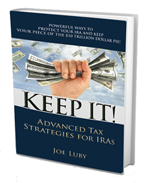Recharacterization & Reconversion of Roth IRA Holding Alternative Assets
Categories: Investment Strategies, Retirement StrategiesOctober 17th was the deadline to undo (technically “to recharacterize”) a Roth IRA conversion that was done in calendar year 2010. The law allows recharacterizations until October 15th each year, but this year the 15th fell on a Saturday so the deadline bumped to Monday the 17th. Many IRA owners choose to recharacterize when the account value decreases after the conversion date. This makes sense because, for example, who wants to report $100,000 of taxable income on an account that’s only worth $60,000? And the bonus is they can reconvert back into a Roth IRA at the lower account value.
The key question is: when can one reconvert an IRA that has already been converted and then recharacterized? This is an often misunderstood timeline. The rule has two waiting periods: thirty days from the recharacterization date or the next tax year following the year of the conversion, whichever is longer. Assume the original Roth conversion was done in 2010 and the client recharacterized the account back to a Traditional IRA on October 10th, 2011. In this scenario, they only need to wait thirty days before reconverting the account back into a Roth IRA. This is because the original conversion was in 2010 and the recharacterization was in 2011, the next tax year. Thus, they already met the next tax year requirement, so a thirty day wait is longer than waiting until the next tax year. If the original Roth conversion occurred earlier in 2011 with the recharacterization on October 10th, 2011, then the client would need to wait until January 2012 before reconverting.
The issue of whether to recharacterize can become even more complicated when the IRA holds alternative assets such as non-traded REITs, hedge funds, BDCs, limited partnerships interests, etc. These assets are often hard to value and may require formal appraisals to determine the correct amount of income to report on the Roth conversion. They are also commonly valued at the original investment amount which is almost always incorrect and out of date by the time the IRA owner does a Roth conversion. It is vital that advisors review the values of alternative assets as shown at the time of the Roth conversion and determine whether an updated valuation analysis would result in a reduced value for reporting purposes. If so, a recharacterization should be considered. Then a new valuation can be performed during the applicable waiting period and the account reconverted once the asset value has been properly updated.
Author: Joe Luby, CFP®
©2011 All Rights Reserved.


Comments are closed.